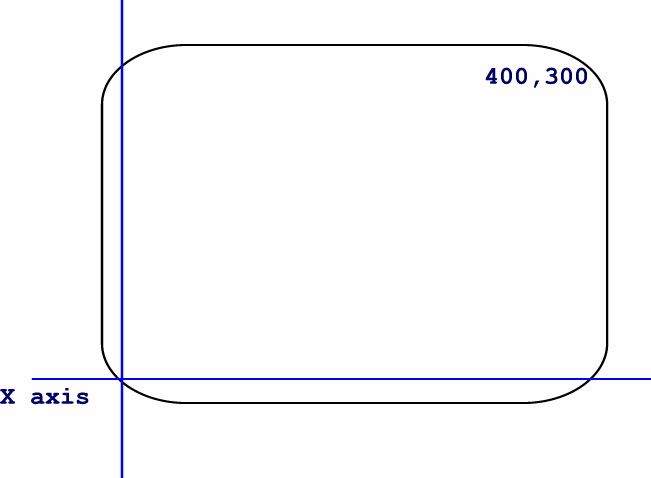When you define an object, you can specify its ancestry; that is, you can indicate that the object is the child of another object, or of the screen itself. If you define an object without specifying an ancestor (parent), its ancestor by default is the primary region.
You can explicitly define the screen size, using coordinates or dialog units, or you can allow it to be defined by default in device units. The position of the object is specified using the coordinate system of the screen. Suppose you specify the following screen size declaration in an ESL program:
screen size 400 300
The screen has the coordinates shown below.
